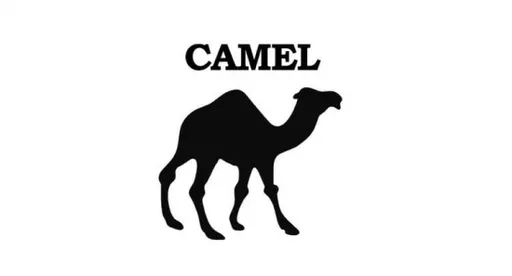h264, yuv420p, 1280x270 |ENGLISH, aac, 44100 Hz, 2 channels | 10h 53 mn | 1.9 GB
Created by: Dilip S
Learn Apache Camel framework by coding and building apps in Java.
What you'll learn
Complete understanding of Apache Camel framework and how to use and implement it in real time.
Learn to develop a stand alone Java camel app that read the data from JMS and persist in to DB.
Learn to develop a stand alone Java camel app that read the data from Kafka and persist in to DB.
Learn to develop a stand alone Java camel app that read the data from Rest Endpoint and persist in to DB.
Learn to build and run the project in your machine.
This course will be continuously updated.
Requirements
Basic Knowledge of Java
Basic Usage of tools like IntelliJ/Eclipse
Description
Learn Apache Camel framework by coding it in Java. This is purely a coding course where you will be performing ton of code throughout the course. This course will cover integrations with Kafka, Active MQ, Postgres SQL , Rest WebServices and etc.,
Why should I take this course ?
This course will provide you the fundamentals of how Apache Camel works?
All the concepts will be explained through code.
This course will walk you through the camel concepts step by step.
Gain confidence on the Apache Camel framework by developing and running the Apache Camel apps.
By the end of this course you will have a complete understanding of Apache Camel and how to implement these concepts real time.
Course Overview:
Section 1: Getting Started
This section explains about the author and course overview.
Section 2: Why Camel ?
This section explains about Why camel is a powerful integration tool in the world.
Section 3 : WorkSpace Setup
This sections covers installation of Java and Intellij on a Mac machine.
This section covers installation of Java and Intellij on a Windows machine.
Section 4: Coding a Simple Route
This section covers coding a simple route, enable logging in the route, multiple routes in camel , how camel transports content behind the scenes and producers and consumers in camel.
Lab exercise on how to code a simple route.
Lab exercise on how to enable logging in the route.
Explanation on how camel transports the content behind the scenes.
Producers and Consumers in Camel.
Lab exercise on how to code multiple routes in camel.
Section 5: Camel Architecture
This section covers the explanation of Camel Architecture.
Section 6: Testing the CamelRoute
This sections covers the different ways of testing a camel route.
Lab exercises on how to test a camel route using JUnit.
Lab exercise on how and when to use Direct component in camel.
Lab exercise on how and when to use Mock component in camel.
Section 7: Transform using Camel
This sections covers different ways of converting the input from one form to another form.
Lab exercise on how to transform the content using processor in camel.
Lab exercise on how to integrate the processor and direct component in camel.
Lab exercise on how to transform the content using transform method in camel.
Section 8: Error Handling in Camel
This sections covers the different approaches of handling the exceptions in camel.
Introduction to Exception handling and life cycle of exceptions.
Lab exercise on DefaultError Handler in Camel.
Lab exercise on OnException method in camel.
Lab exercises on Handling the exceptions using the OnException method.
Lab exercises on ignoring the exceptions using OnException.
Section 9 : Enterprise Integration Patterns
This section covers different enterprise integration patterns in camel.
Lab exercise on Content based Router.
Lab exercise on MultiCast Enterprise Integration Pattern.
Lab exercise on Recipient List Enterprise Integration Pattern.
Lab exercise on WireTap Enterprise Integration Pattern.
Section 10 : Create a stand alone Java Camel App that reads the data from JMS to DB
In this section we will develop a stand alone Java Camel app that connects to Apache Active MQ to DB.
Learn to download and run the Apache Active MQ in your machine.
Lab exercise on How to connect to ActiveMQ using Camel.
Lab exercise on How to connect to PostGres DB using Camel.
Lab exercise on How to handle exceptions in the route.
Learn to built the Java app and run the app in your machine.
Section 11 : Create a Route from Kafka to DB
In this section we will develop a stand alone Java Camel app that reads the data from Apache Kafka to DB.
Learn to download and run the Apache Kafka in your machine.
Lab exercise on How to connect to Kafka using Camel.
Lab exercise on How to connect to PostGres DB using Camel.
Lab exercise on How to handle exceptions in the route.
Learn to built the Java app and run the app in your machine.
Section 12 : Create a Route from Rest Endpoint to DB
In this section we will develop a stand alone Java Camel app that connects to Rest Endpoint to DB.
Lab exercise on How to connect to Rest Endpoint using Camel.
Lab exercise on How to connect to PostGres DB using Camel.
Lab exercise on How to handle exceptions in the route.
Learn to built the Java app and run the app in your machine.
By the end of this course you will gain the complete understanding of how apache camel works and how to integrate with different technologies such as Kafka, JMS, Postgres SQL, RestEndpoint etc.,
Who this course is for:
Anyone who likes to explore Apache Camel
Anyone who wants to learn about different integrations with Camel

发布日期: 2020-04-08